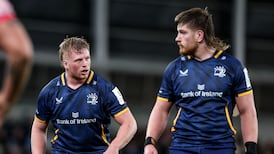So today John Muldoon bids farewell to the Sportsground and Connacht. After 17 years with the province, during which he led them to their greatest day in that 2016 Pro12 final win over Leinster at Murrayfield, his status is assured. Today he extends his Connacht record to 327 competitive appearances. Truly we will never see his like again.
With the passing years, the better he became. In his 30s, he was at his most durable and dependable, and played his best rugby. In the last four seasons, Muldoon played 107 out of Connacht’s 117 matches. Of those, he started 96, completing 80 minutes a total of 73 times.
“That’s incredible,” admits Connacht assistant coach Nigel Carolan. “It’s become one of the most important attributes for a player to have, never mind your skills or your speed; the ability to be durable. The shelf life of a rugby player has dropped from an average of 12 years to an average now of eight, only in the last number of years.”
By comparison, Andrew Browne, the 31-year-old, home grown, Galway-born lock is also retiring from Connacht, having been restricted to 56 games in the last four seasons.
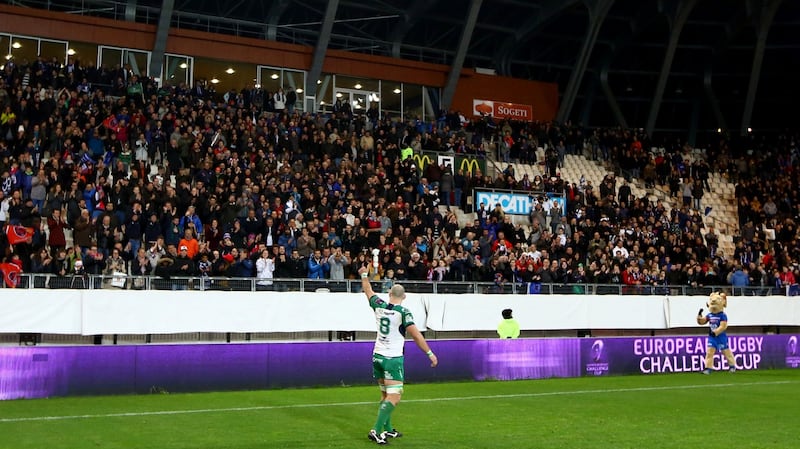
As well as the Connacht record (Michael Swift is next on 269), Muldoon’s 252 appearances in the Guinness Pro14 are a tournament record, over 50 clear of the next best, Matthew Rees.
“In the last 15 years the game has become so much more brutal as well,” adds Carolan. “I can’t see his [Muldoon’s] total being beaten in the modern game.”
Carolan began working with the IRFU in 2002, the final year of the national academy, which Muldoon was a part of. He first saw Muldoon play when Connacht won the Under-20 interprovincial championship for the first time in 2002.
Smart player
“You could see then, even as a 19-year-old, he had a good head on his shoulders. He was never the most skilful, or the fastest, but he was a smart player. He rarely missed tackles, or breakdowns. He was very dependable. He always had a good grasp on the game as well. He was never afraid to speak his mind.”
Muldoon’s career also gives the lie to the notion that you can’t teach an old dog new tricks. Jake Heenan, who has soldiered alongside Muldoon in the Connacht backrow for the last five years, says: “One of the most interesting things I’ve found about ‘Mul’ is that I would say he is a much better player now than when I first turned up.”
“His ability to continue to learn the game and the skills of the game, is what impressed me the most. He learned to throw good passes and all sorts of offloads. I had a psychologist who I worked with back in New Zealand and he said the idea that every player has a prime is a myth. He said players only stop getting better when they stop working on little skills.”
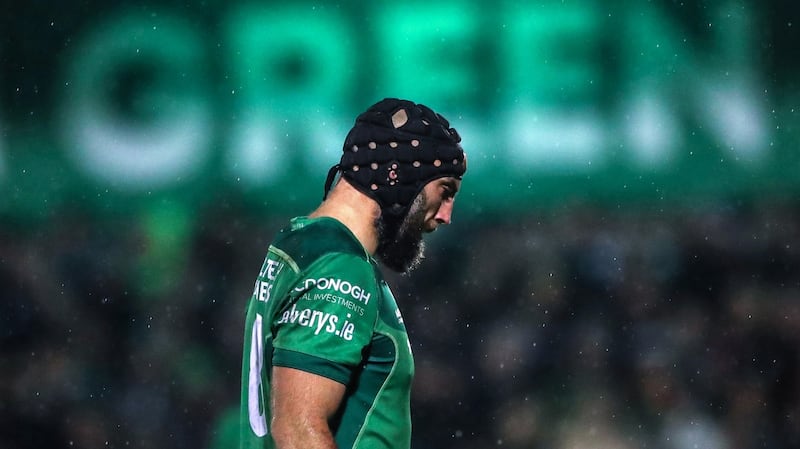
The man himself maintains he was a puppy when he learned his handling skills, and that they’d largely remained dormant until Pat Lam came along. He was about 13 or 14 when he and his brother Ivan, older by 13 months, stood at opposite ends of the hallway in their home in Portumna and fired a rugby ball at each other. The hallway was only a couple of metres wide and both walls were adorned with framed family photographs, which demanded accuracy.
One uncle rowed in the Montreal Olympics and another was a noted tug of war exponent, but coming from Portumna both sides of his family tree were steeped in hurling.
From the age of two or three he remembers running around with a hurl in his hands and he started playing with Gortanumera National School.
He started playing rugby – again inspired by Ivan – from the age of 14 at Portumna Community School. They also joined Nenagh to play in the North Munster League, and won an All-Ireland title. He then broke into the Connacht Youths and the Irish Youths. Meanwhile, after the Portumna Minors retained their Galway crown, he won an All-Ireland Minor medal with Galway when beating Cork at Croke Park. He played a club game about two weeks later, and that was it.
“Rugby probably suited me better and I liked the physicality of it,” he once explained. “I’ve always been a realist and I knew I was better at rugby as well, but I just enjoyed the game more.”
Muldoon moved to Galway with his brother and a cousin, while playing for the Ireland Under-19s, and joined Galwegians. He played for the Irish Under-21s in two Under-21 World Cups, in South Africa in 2002, and England in 2003.
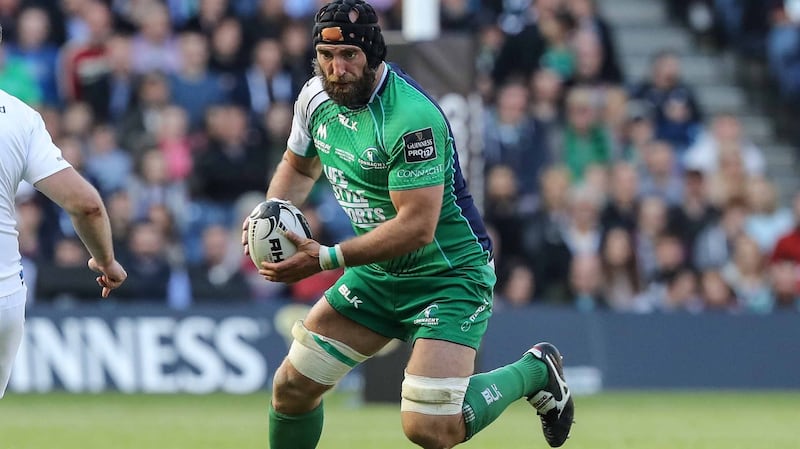
He was offered a Connacht development contract the following season, which Steph Nel promptly upped to a full-time contract when Johnny O’Connor, Gavin Duffy and Colm Rigney decamped to England. Whereupon Nel suddenly stepped down, to be replaced by Michael Bradley.
Competitive debut
He made his competitive debut as a replacement in a home win over the Border Reivers in October, but playing for Galwegians he suffered an ankle ligament injury which sidelined him for six months.
It was a blessing, allowing him to bulk up in the gym. “It turned me from a frail young fella into a bigger man.”
Having turned 22, he played 24 games for Connacht in 2005-06, and on foot of agreeing a new contract, was also offered the captaincy but turned it down, as he felt he was too young, before taking it on two years later.
Muldoon became a mainstay for four years. There were some notable scalps in the Challenge Cup but, lacking squad depth, there were some bad days too. Midway through the 2008-09 season, Muldoon had an offer from Ulster, and in England, but Bradley and CEO Gerry Kelly persuaded him to think again. A Christmas crowd of 5,000 packed the Sportsground for a 12-6 win over Munster, their first over them since 1986, and first in Galway since 1979.
“So I decided to stay! Thankfully!”
In the 2010-11 season, Eric Elwood’s first, Connacht rose to ninth of 12 in the League, and thereafter were on the up.
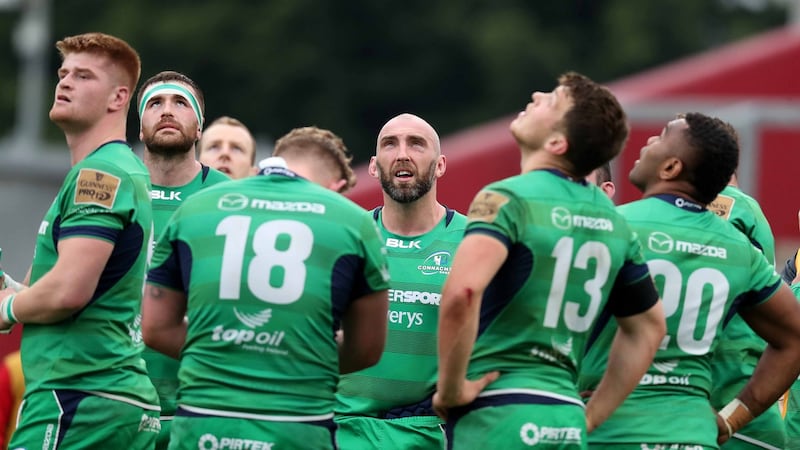
Muldoon won two caps on the Americas tour in 2009, but half an hour into the All Blacks Test in New Plymouth in 2010 he suffered a broken arm.
He did himself and his international prospects no good by allowing himself to be rushed back at Connacht. “The Irish management must have been looking at me going, what’s this gobshite doing? Effectively I killed my international career in those few months. I stupidly put myself forward and said ‘yeah I’ll play’.”
With a lay-off due, against Harlequins that December he broke his arm again, which sidelined him for another three months.
Working on the family farm over the summer of 2011, Muldoon returned fitter than ever in pre-season, when Elwood passed the captaincy to Gavin Duffy. Muldoon was disappointed, but not surprised.
Fit, in form, and ever-present in 2011-12, as in 2008-09, Muldoon was Connacht’s Player of the Season. This earned him one last game in an Irish shirt in the non-capped match against Fiji at Thomond Park in November 2012, when he sustained a knee injury which sidelined him for three months.
“I’m proud to have the caps but I suppose I didn’t really ever feel like I was part of an Ireland team. I felt more like a tackle bag for whatever number of years I was up there [in Dublin], on and off for three or four years.”
In Lam’s third season, 2014-15, Muldoon was re-instated as captain. He had learned from the ex-Chiefs captain Craig Clarke, whom Muldoon describes as the best captain he ever played under.
“Mul was great. I don’t think my experiences with him were too different from anyone else’s,” says Heenan. “He’s always been one of those captains who leads really well, but is also really good mates with the boys. He doesn’t compromise friendships with anyone. I’ve always been able to talk with him on a serious level and a personal level, in a very relaxed manner as well, and it’s very easy to follow someone who knows the game that well.”
In the 2015-16 season, all of Muldoon’s attributes were honed to their best in Connacht’s march to the Pro12 title. He played in 23 of their 24 games, starting all but two and completed 80 minutes 20 times.
“His performances increased with each game,” says Heenan. “Whenever we played big games he played a big game.”
Muldoon became a talismanic figure for the crowd as well as the team. When Muldoon made a big hit, or carry, or latched over the ball for a turnover, it somehow seemed to have more impact.
Warhorse
“He led from the front,” says Carolan. “He always had that big beard so he stood out. But a lot of the work he did went unnoticed because he’s a bit of a warhorse. He was hitting rucks and making other guys look good by the work he did off the ball. As well as being a very competent defender, he was vocal and gave confidence to the players around him.”
When you consider everything, it’s hard to think of anyone who’s had a greater Connacht career. “It’ll be hard for anyone to match what John has given to Connacht rugby, both on the pitch and off it,” admits Carolan. “He is iconic. He’s been an inspirational leader, not only as a rugby player but as a person from the west of Ireland, who believed in his team and where he was from, and knew that they could achieve and stuck with it.”
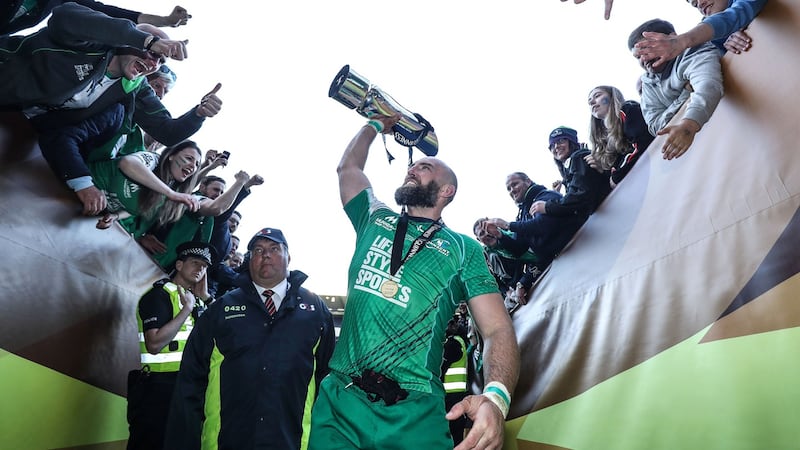
“There were times when it was tough. He had offers on the table. He could have gone. But he stuck with it, and a lot of the success, when it came, was down to people like him. People know him for what he represents and how he has presented himself. He was never one that looked for the glory, but the glory has come to him because of how hard he has worked for it.”
At Bristol, Muldoon, as defence coach, and Heenan, as player, will be linking up again with Lam and Conor McPhillips, who is an assistant coach there.
“He’s got a good head for it,” says Carolan. “He doesn’t get too flustered. He’s quite analytical. He’s very logical. He’s able to break big pictures into small bits and decide which ones work and don’t work, and he’s a good way of speaking to the lads. He believes in what he thinks. It’s his point of view, not someone else’s and he’s thought about it.
“He’s also extremely passionate who’ll get the players to buy into his way, but I think he’ll allow them to grow as well. He’s not one that likes to have it all about him. I think he’ll make a wonderful coach.”
And one day, maybe, return to coach the province he represented as proudly and effectively as anybody has ever done.
Five long-time Connacht stalwarts throughout the decades
Ray McLaughlin
Technically acclaimed loosehead, and ahead of his time. As much a player-coach as captain, the Ballinasloe-born product of Garbally played for Connacht and Ireland for much of the 60s and 70s, captaining both, as well as going on two Lions tours.
Ciaran Fitzgerald
Born in Loughrea and another product of Garbally College, the hooker remained loyal throughout a career which saw him captain his province, his country and the Lions, before then coaching both Connacht and Ireland.
John O’Driscoll
Rugged, tough-tackling durable flanker in the mould of Muldoon, he remained loyal to Connacht throughout a playing career with London Irish and Ireland in the 70s and 80s, twice touring with the Lions.
Noel Mannion
Another Ballinasloe/Garbally product, and after representing Connacht at schools and under-20 job, the number eight played for Connacht throughout his entire career, when based with Lansdowne and Buccaneers, also winning 16 caps for Ireland.
Eric Elwood
Played 168 times for Connacht over 17 seasons from 1989 to 2005, as well as 35 caps for Ireland. Given he only played in the first four years of the Celtic League, heaven knows what his tally might have been in the modern era. Went on to be assistant coach, head coach, domestic rugby manager and is now Academy manager.



